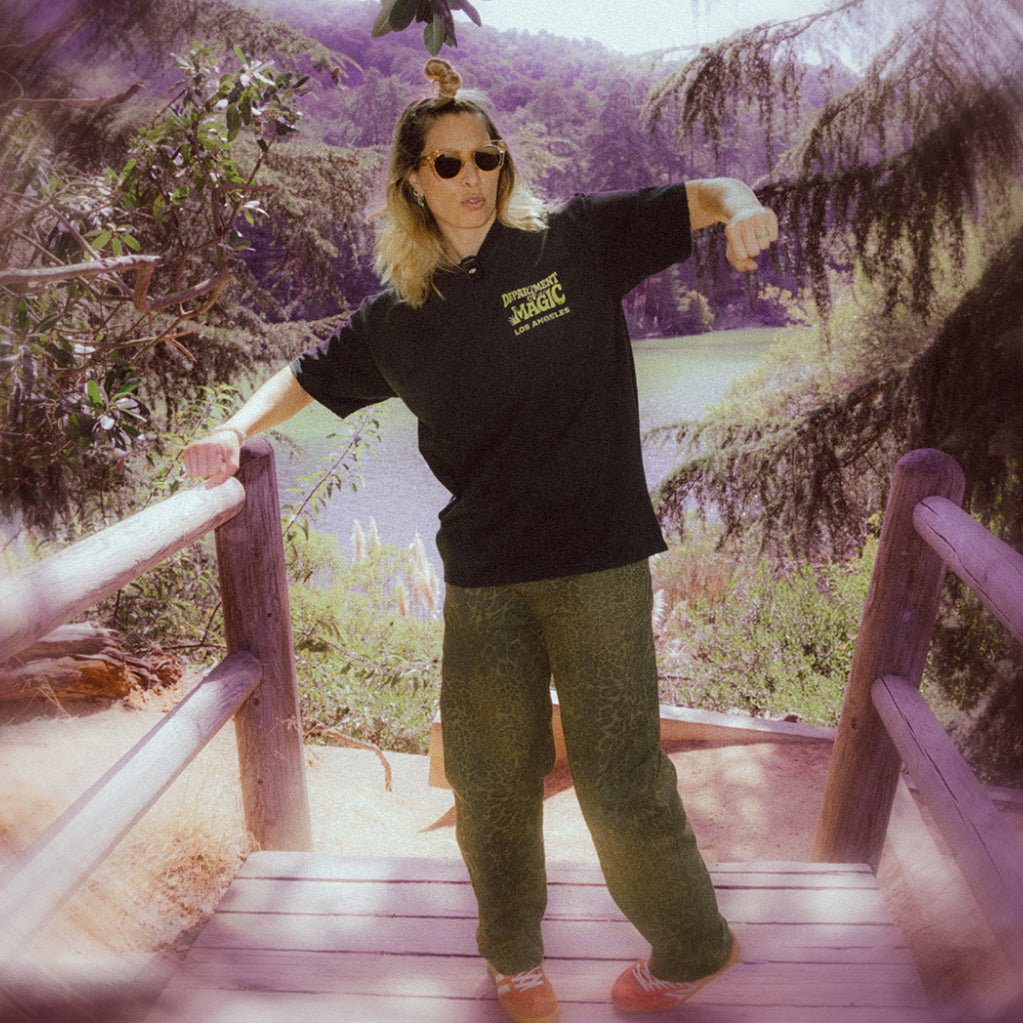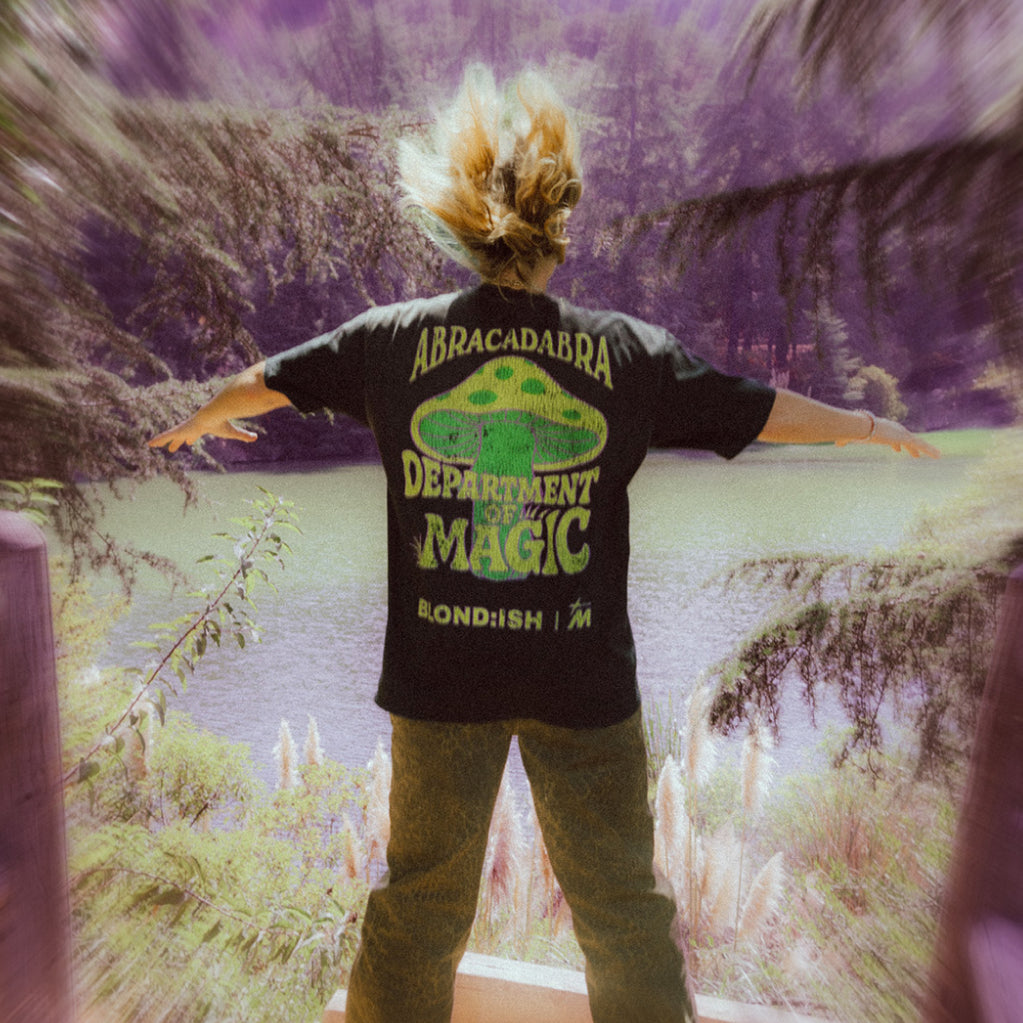MINT EDITION / 008
The pioneering vintage clothing company launches its latest collection, assembling over 200 of the rarest and most prized pieces in the history of Japanese fashion.

"I love telling a story and I love hearing a story and I love learning," professes Sean Wotherspoon with signature passion. "I feel like vintage and second-hand product has that depth to offer." The conviction of his words has long been mirrored in his actions. After thrifting a 1992 Polo Bear tee shortly after finishing high school, Wotherspoon developed a self-professed "obsession" with understanding the roots of his favorite clothing. He's since turned that studious zeal into a fervent livelihood, flourishing as a designer, curator, and collector.
Central to all three roles, he is a fierce ambassador of vintage clothing's ability to communicate both where we've been and where we're going. In his role as co-founder of the pioneering vintage clothing company MNTGE, he is now unveiling the collective's most coveted drop to date. A museum-grade assembly of preeminent Japanese streetwear from the turn of the millennium, the archive exemplifies the inextricable link between fashion's rapid evolution and its past. As Wotherspoon states definitively, "Japanese streetwear started the fashion world as we know it today."

While Wotherspoon's design skills and authoritative insight has long been sought by everyone from Nike to GAP (he serves as Global Vintage Curator for the latter), his work with MNTGE represents a unique foothold in the vintage space. Co-founded alongside serial entrepreneurs Brennan Russo and Nick Adler, their work is pointedly tech-leaning for a community that Wotherspoon recognizes as being typified by "sellers at flea markets and guys who owned vintage stores like I did." Resellers clamor to feature in MNTGE's slickly produced social media content, their collections proudly embrace blockchain technology via scannable tags, and the founders' collective business acumen represents a singular opportunity. As Wotherspoon explains, "What's interesting about vintage is it's a huge market, we're talking billions of dollars in market cap, but nobody really owns that category at a high level of production. I've never seen such a valuable category where the market share is owned by so many smaller companies. What we're working towards with MNTGE is to say, 'Hey, we're going to bring you what you know about vintage clothing. We're going to bring you these markets, we're going to bring you these drops, but we're going to do it at the level of a company that's raised over a million dollars.”

MNTGE's latest drop, assembling over 200 of the rarest and most highly-sought Japanese streetwear pieces to ever be produced, is particularly personal to Wotherspoon. He divides much of his time between the United States and Japan, while apparel from his own Sean Wotherspoon collection has also been designed and manufactured between the two countries.
Wotherspoon is quick to stress Japan's influence on not just his journey, but popular culture at large. "Japan started streetwear," he declares. "These guys, Nigo, Hiroshi Fujiwara and Kazuki Kuraishi, who started these initial streetwear brands and designs? They're now the biggest in the world." Tracing their origins, Wotherspoon states, is key to understanding the ascent of the aforementioned designers and their peers.
"The collection we have is from those years, early nineties to mid-nineties to early 2000's, when all these prominent brands started. I would say if there was a streetwear Smithsonian, these would be the pieces that they would want to start their collection with."

Delving further into the archive’s curation proves that Wotherspoon’s claims are far from hyperbole. MNTGE’s extensive capsule boasts some of the earliest designs from Japan’s most iconic brands. "We have some items from Neighborhood from the first year that they were ever a company. We have some items from BAPE from the first year that they were ever incorporated as a company. People are going to look back on this drop like, ‘Holy shit, why didn’t I buy these before they got put in a museum?’”
When pressed for his personal favorite pieces, Wotherspoon naturally takes it back to the very beginning. “There’s an item that’s dated 1993 by BAPE. I am confident that it’s the only item currently in the world with a 1993 date on it from BAPE. That is the year the company started. I mean, you might find some BAPE stuff dated ‘94, ‘95 or ‘96, but ‘93? That’s almost unbelievable.”
Such a first isn’t an anomaly in the collection either. As Wotherspoon expounds, “We have items from some of these brands before they even made their own sewn-in tags, and they were just using blanks from Hanes and companies like that.”

The entire collection was donated by an anonymous benefactor who a tight-lipped Wotherspoon can only describe as "a really special person" and "one of the figures who started it all." Wotherspoon recalls this donor pulling over 200+ pieces (all meticulously maintained) out of their storage unit and expressing their desire to find a good home for them. The donor shares in MNTGE's ethos that the story behind these incredible pieces should be passed down to the next generation. As Wotherspoon quickly points out, that kind of altruism isn't necessarily common in collector circles. "A lot of these collectors hold on to this stuff forever. You don't get to tell the stories and the younger generation doesn't get to hear the stories or fall in love with this stuff. This friend of mine, he really wanted the stories to be told and we feel like MNTGE was just such a great vehicle for that."
While the person behind the collection will remain a guarded secret, it has been publicly recognized by one of the most influential figures in the Japanese streetwear movement. Kazuki Kuraishi, who Wotherspoon displays palpable admiration for, expresses a similar sentiment that the story behind these pieces transcends fashion parameters. "This era of Japanese design was never just about fashion," Kuraishi elaborates. "It was about identity, rebellion and detail-driven craftsmanship." Drawing attention to the capsule's pristine condition, Kuraishi adds that "it's rare to see this level of preservation. These pieces aren't just vintage - they're artifacts." Wotherspoon and MNTGE have every intention of treating the items as such for as long as they remain in their care. "Maybe in the future, we're going to be a partner for that streetwear Smithsonian. We're locating, sourcing and curating these collections that will then be procured and preserved for the next fifty-plus years. That's what our world has done best. You can go to a museum and you can look at dinosaur bones from millions of years ago. These are our dinosaur bones."











